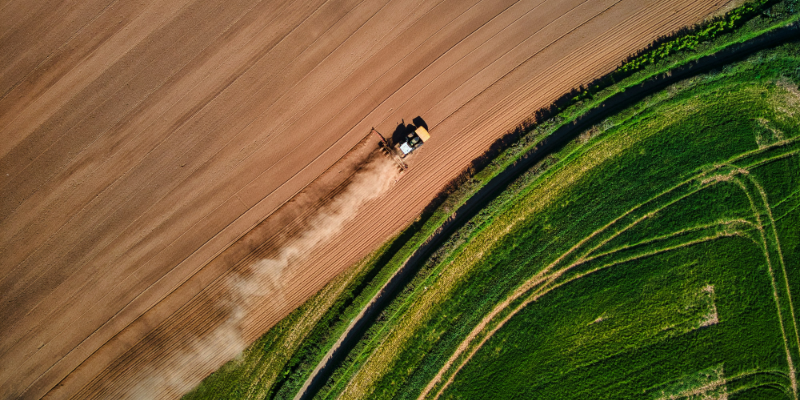Making sense of our connected world

Between vision and reality: Discourses about Sustainable AI in Germany
AI is frequently portrayed as a powerful tool to combat climate change and foster sustainability. But how realistic is this vision? This blog article delves into the ongoing debate about Sustainable AI, examining how AI is framed as both a force for positive change and a technology with significant environmental costs. In Germany, the conversation increasingly shifts—from early excitement over AI’s potential in agriculture and mobility, to growing concerns about its ecological footprint. Can AI truly be part of the solution, or is it ultimately contributing to the very problems it aims to solve?
The controversy about Sustainable AI
In recent years, the term Sustainable AI has gained prominence in academic and political circles. On our Digital Society Blog, we have also highlighted various aspects of these technologies, from projects that use AI to protect the environment to the role of AI in sustainable industrial sectors. But what exactly does the term ‘Sustainable AI’ mean, and how is it being addressed in the public debate in Germany?
The term Sustainable AI can be roughly divided into two areas: AI for sustainability and sustainability of AI (van Wynsberghe, 2021). AI for sustainability refers to technologies designed to support environmentally friendly purposes, such as AI systems used to optimise energy grids, help to protect endangered species, or monitor forest fires and deforestation through satellite imagery.
On the other spectrum, the sustainability of AI examines the ecological footprint of AI itself, including the energy-intensive processes involved in training large machine learning models or maintaining data centers. Recent research tried to shed light on the true carbon footprint of using generative AI models. According to a study by researchers from the AI startup Hugging Face and Carnegie Mellon University, generating a single AI image can consume as much energy as fully charging a smartphone. The fact that this distinction — between AI as a tool for sustainability and the environmental cost of AI systems — only entered public discourse recently highlights how topical this discussion is. The conversation is just beginning to address the full complexity of AI’s environmental impact.
Big tech’s green promises: Sustainable AI or just PR?
Unlike the public, large technology companies such as Google, Microsoft and Meta were quick to recognise the trend and the need for Sustainable AI. They promise carbon neutrality and recycling measures in order to be perceived as environmentally conscious. However, the aim behind these self-regulations is often mainly to appease regulators, consumers and activists, while the actual business model remains unchanged (Dauvergne, 2022). Google, for example, has pledged to become carbon neutral by 2030. However, the company’s environmental report for this year recorded 14.3 million tonnes of CO2 emissions. Compared to 2019, these figures have increased by 48 per cent, and by 13 per cent compared to the previous year. According to Google, this is mainly due to the increased energy consumption of its data centers related to AI applications. But as a company they are “working to responsibly manage the environmental impact associated with it” (Google, 2024, p. 10). However, the sustainability of companies remains difficult to measure due to a lack of transparent data and suitable measurement methods (Kaack et al., 2022). As the demand for AI technologies grows, it is important that we not only critically assess the environmental implications of AI systems but also foster a collaborative dialogue among stakeholders to ensure that their development aligns with genuine sustainability goals.
AI and sustainability in the discourse in Germany
The following analysis is part of my dissertation about AI discourses in German policies, media, and social media from 2012 to 2021. Although the findings are not final, I want to share some first insights into the analysis about the Sustainable AI discourse in Germany before there will be concrete results in the course of the next year.
In recent years, the discourse surrounding AI and sustainability in German media and politics has primarily focused on sustainable value creation. This means the long-term benefits that organisations create by integrating environmental, social, and economic considerations into their operations, ultimately contributing to a healthier planet and society while ensuring profitability. Particularly in sectors like agriculture and mobility, AI applications were supposed to contribute to greater sustainability. For instance, AI applications such as precision farming use data analysis to optimise resource use, leading to less water and fertiliser waste. Similarly, in the mobility sector, AI technologies power smart traffic management systems that reduce congestion and emissions by improving public transport efficiency. Start-ups such as Octopus Energy or Swiss Future Farm and their marketing promises dominated this discourse, often accompanied by a strong technological solutionism and bold claims: AI was presented as a solution to climate change, supported by the pursuit of the UN Sustainable Development Goals (SDGs). In this context, policies conveyed the narrative that digital technologies can support sustainable development in areas like urban planning, circular economy, and energy transition, which may lead to resource transparency, efficiency, and food security in the long run.
The resource consumption and general environmental costs of AI only became an issue in 2019 and 2020, when prominent German media outlets such as Der Tagesspiegel (Parrisius, 2019) and Der Spiegel (Bethge, 2020), along with political parties such as Die Grünen (Janecek, 2019), began to highlight the ecological footprint of AI technologies. While this framing of the issue was nowhere near as strong as the solutionist promise of AI as (part of) the solution to climate change, it did indicate a shift in priorities in public discourse. This change in perspective led to the Federal Ministry for the Environment becoming involved in revising Germany’s AI strategy in 2020 (Die Bundesregierung, 2020). The updated strategy aims to balance the technological promises of AI with a more critical understanding of its resource-intensive nature. This included acknowledging that while AI can drive sustainability, it also contributes to the broader challenges of digitalisation, such as increased energy demands and electronic waste. Will the increasing concerns about the sustainability of AI get the attention they deserve amidst the current excitement surrounding its capabilities? Or will they be overshadowed by the strong economic interests of major tech companies eager to promote their innovations?
From faith in progress to critical discourse
While it is tempting to criticise the solutionist mindset that dominates media and political discourse, the reality is more complicated. Seeking technological solutions to global challenges is a rational approach, but it raises the pressing question of whether AI will ultimately do more harm than good in the context of climate change.
The solutionist narrative promoted by the tech industry perpetuates the idea that capitalism and technology can solve the problems that they themselves have partly caused (Schütze, 2024). This approach runs the risk of oversimplifying the issue and ignoring the broader environmental implications of AI. To truly understand AI’s impact on sustainability, a more nuanced dialogue that incorporates scientific perspectives and critical analysis is essential. By fostering this balanced discourse, we can better assess both the benefits and drawbacks of AI and ensure that we do not overlook its potential to exacerbate existing environmental challenges.
A similar shift occurred in the energy sector, particularly with renewable energy. Initially, the focus was on technological advancements in solar, wind, and bioenergy as simple solutions to the climate crisis, overlooking the complexities of the transition. This “solutionist” view, driven by industry and governments, framed technology as a silver bullet, ignoring broader issues like energy equity and resource limitations. Over time, the discourse became more nuanced, with scientists and policymakers highlighting the environmental and social costs of renewable technologies, such as resource extraction and land use. The conversation now includes lifecycle impacts and energy justice, offering a more balanced approach that could serve as a model for addressing the environmental impacts of AI.
References
Bethge, P. (2020, February 12). Landwirtschaft der Zukunft: Unsere schlaue Farm. Der Spiegel. https://www.spiegel.de/wissenschaft/technik/landwirtschaft-forscher-entwickeln-den-ackerbau-der-zukunft-a-00000000-0002-0001-0000-000169356848
Dauvergne, P. (2022). Is artificial intelligence greening global supply chains? Exposing the political economy of environmental costs. Review of International Political Economy, 29, 696–718. https://doi.org/10.1080/09692290.2020.1814381
Die Bundesregierung. (2020). Strategie Künstliche Intelligenz der Bundesregierung. Fortschreibung 2020. https://www.bmwi.de/Redaktion/DE/Publikationen/Technologie/strategie-kuenstliche-intelligenz-fortschreibung-2020.pdf?__blob=publicationFile&v=10
Google. (2024). Environmental Report. https://sustainability.google/reports/google-2024-environmental-report/
Janecek, D. (2019, May 6). Wie entwickeln wir eine digitale Nachhaltigkeitsstrategie, damit Künstliche Intelligenz nicht als Brandbeschleuniger bei Energie- und Ressourcenbedarf sowie CO2 wirkt? [Online post]. X. https://x.com/DJanecek/status/1125301898083487744
Kaack, L. H., Donti, P. L., Strubell, E., Kamiya, G., Creutzig, F., & Rolnick, D. (2022). Aligning artificial intelligence with climate change mitigation. Nature Climate Change, 12(6), Article 6. https://doi.org/10.1038/s41558-022-01377-7
Parrisius, A. (2019, November 3). Stromfresser Internet: Was unser Digitalkonsum an Energie kostet. Der Tagesspiegel Online. https://www.tagesspiegel.de/wirtschaft/was-unser-digitalkonsum-an-energie-kostet-6868006.html
Schütze, P. (2024). The Problem of Sustainable AI: A Critical Assessment of an Emerging Phenomenon. Weizenbaum Journal of the Digital Society, 4(1), Article 1. https://doi.org/10.34669/WI.WJDS/4.1.4
van Wynsberghe, A. (2021). Sustainable AI: AI for sustainability and the sustainability of AI. AI and Ethics. https://doi.org/10.1007/s43681-021-00043-6
This post represents the view of the author and does not necessarily represent the view of the institute itself. For more information about the topics of these articles and associated research projects, please contact info@hiig.de.

You will receive our latest blog articles once a month in a newsletter.
Digitalisation and sustainability
Artificial intelligence and society
Polished yet impersonal: The unintended consequences of writing your emails with AI
AI-written emails can save workers time and improve clarity – but are we losing connection, nuance, and communication skills in the process?
AI at the microphone: The voice of the future?
From synthesising voices and generating entire episodes, AI is transforming digital audio. Explore the opportunities and challenges of AI at the microphone.
Do Community Notes have a party preference?
This article explores whether Community Notes effectively combat disinformation or mirror political biases, analysing distribution and rating patterns.





